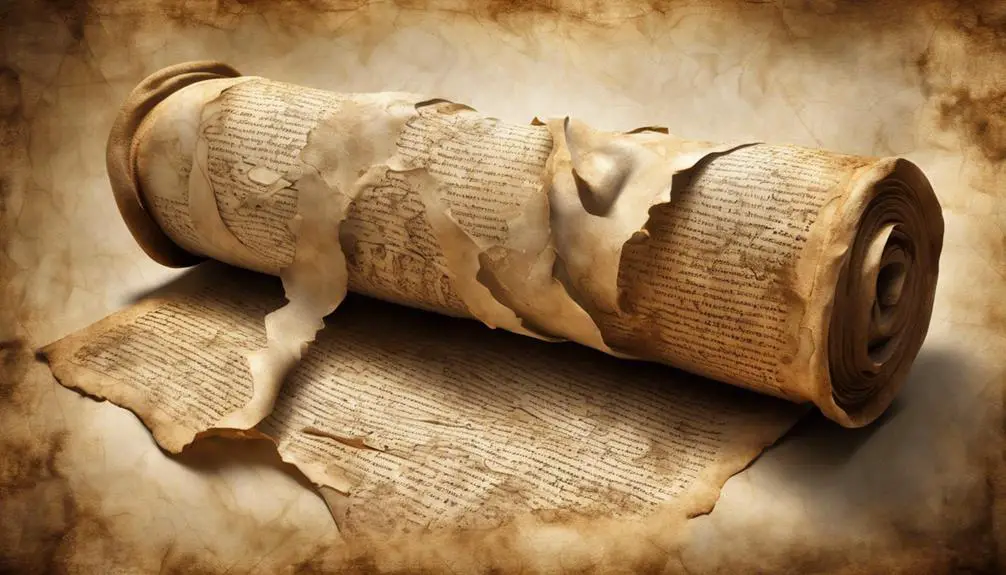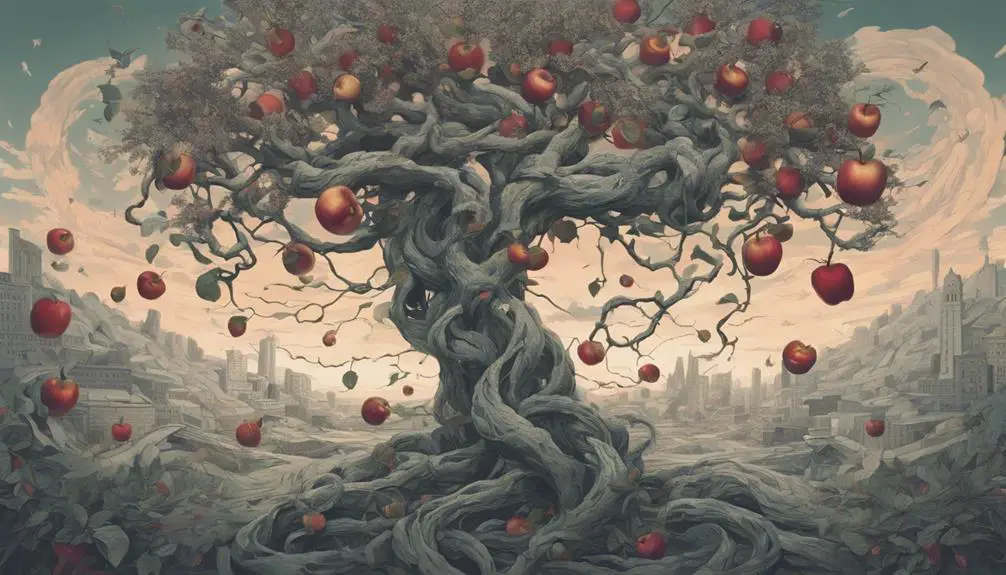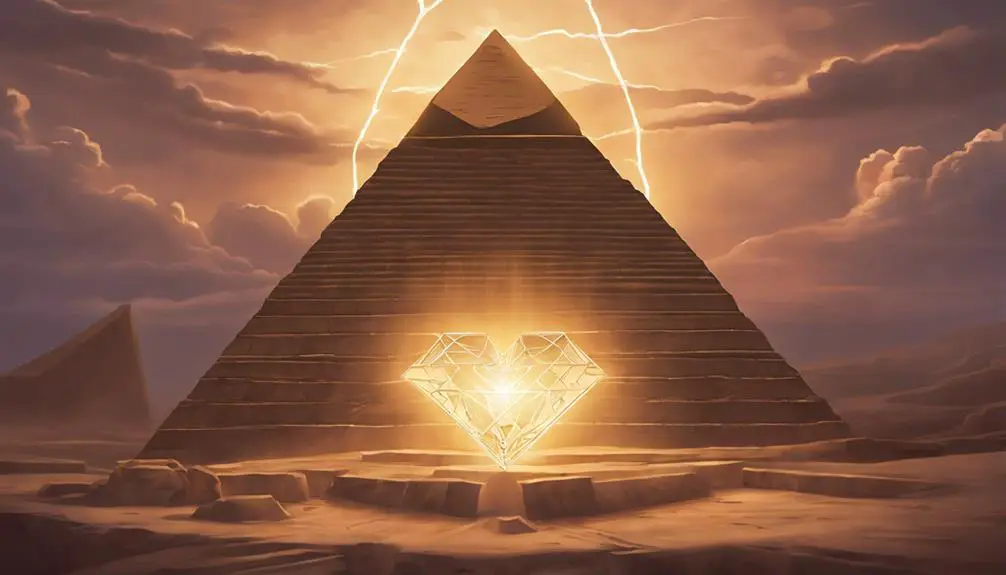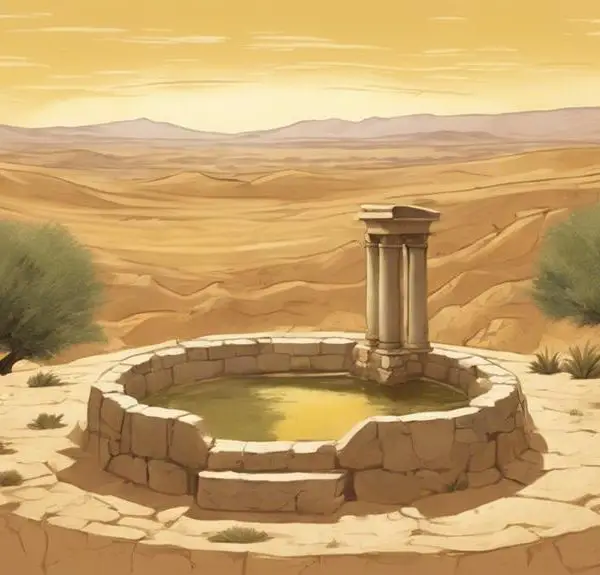Traverse the enigmatic plot holes of the Bible, where ancient contradictions ignite a quest for truth and understanding.

Plot Holes in the Bible
Imagine opening an ancient, weathered book, its pages filled with tales of creation, miracles, and mysteries that have shaped civilizations. You've stumbled across contradictions and enigmas that scholars and believers alike have debated for centuries.
From the differing accounts of creation to the curious case of Cain's wife, the hardening of Pharaoh's heart, discrepancies surrounding Judas Iscariot's demise, and Jonah's improbable survival in a fish, these plot holes invite you to question and seek understanding.
What lies beneath these narratives might challenge your perceptions and spark a quest for deeper insight.
Key Takeaways
- Discrepancies in creation narratives and events challenge traditional interpretations and literal readings.
- The mystery of Cain's wife and early human population dynamics prompts theological and ethical discussions.
- Conflicting accounts of Judas Iscariot's death exemplify the complexities and interpretive challenges of biblical texts.
- The story of Jonah and the fish illustrates the balance between historical reliability and metaphorical significance in biblical narratives.
Creation Narratives Contradictions

Upon examining the creation narratives within the Bible, one immediately notices apparent contradictions that prompt further scholarly analysis. You might observe, for instance, the sequence of events regarding the creation of light and the emergence of vegetation. These elements, central to understanding the Bible's cosmogony, present a fascinating area for inquiry.
The order in which light is introduced, particularly before the creation of the sun and the moon, suggests a non-literal interpretation might be necessary. You're faced with a narrative where light exists independently of its traditional sources, challenging conventional understandings of light and darkness. This aspect has led scholars to explore the symbolic meanings behind these elements, rather than adhering strictly to a literal sequence.
Furthermore, the timing of vegetation's appearance raises questions about the chronological order presented in Genesis. Vegetation is depicted as flourishing before the sun, which governs the day, is created. This sequence encourages you to think beyond a literal framework, considering the possibility that these narratives convey deeper theological truths rather than historical or scientific accuracy.
Cain's Wife Mystery
Turning our attention to another intriguing aspect of biblical narratives, we encounter the enigma of Cain's wife, a topic that has perplexed scholars and readers alike. This mystery arises shortly after Cain is banished for the murder of his brother Abel. The Bible mentions Cain's wife without prior introduction or explanation, leading to questions about her origin and the broader implications for early human society.
- Lack of specifics: The Bible doesn't specify from where Cain's wife originated, leaving a gap in the narrative.
- Genetic implications: This absence raises questions about genetic diversity and the initial population growth among early humans.
- Sibling speculation: Some scholars suggest that Cain's wife could have been his sister or a close relative, a common explanation that aligns with the necessity for population growth but complicates modern understandings of genetics.
- Theological interpretations: Various interpretations have been proposed, ranging from literal readings of the text to more allegorical or metaphorical understandings.
- Impact on faith: Despite these debates, for many, the mystery of Cain's wife doesn't detract from the spiritual and moral lessons of the Bible.
This topic exemplifies the complexities and interpretive challenges within sacred texts, inviting reflection on their historical context and the evolution of human understanding.
The Pharaoh's Heart Hardening

In examining another plot hole, the narrative of the Pharaoh's heart hardening presents a complex interplay of divine intervention and human free will. This story, deeply embedded in the Exodus account, raises questions about the nature of God's influence on human decisions and the moral implications of such actions. It's told that God hardens Pharaoh's heart, yet Pharaoh also hardens his own heart against letting the Israelites go. This dual causality leads one to ponder: if Pharaoh's actions are directly influenced by divine intervention, can he truly be held accountable for his refusal?
This scenario challenges readers to navigate the thin line between divine sovereignty and human autonomy. The hardening of Pharaoh's heart serves as a pivotal example of how divine will and human choice can coexist within biblical narratives, yet it leaves the door open for interpretations regarding the fairness and justice of divine intervention. The moral implications of God's role in hardening Pharaoh's heart delve into the theological debate about punishment, mercy, and the extent of God's control over human will, offering a rich ground for scholarly exploration and discussion.
Judas Iscariot's Death Discrepancy
Continuing our exploration of biblical narratives, we now examine the discrepancies surrounding the death of Judas Iscariot, a topic that similarly invites scrutiny into the text's consistency and theological implications. The accounts of Judas' demise, as recorded in the Gospels of Matthew and the Acts of the Apostles, present conflicting details that have puzzled scholars and believers alike.
Here are key points highlighting the discrepancies:
- Method of Death: Matthew describes Judas hanging himself, whereas Acts mentions a fall leading to his death.
- Location of Death: The place of Judas' death is vaguely defined, with variations in the interpretation of the field purchased by the priests or the place he fell.
- Use of the Blood Money: Matthew states that the priests bought the Potter's Field with the thirty silver coins, while Acts suggests Judas made the purchase.
- Judas' Remorse: Matthew portrays Judas as remorseful, leading to his suicide, a detail absent in Acts.
- Financial Discrepancy: The handling and purpose of the thirty silver coins raise questions about the continuity and symbolism in the narrative.
These discrepancies have led to diverse interpretations, emphasizing the complex nature of biblical texts and the challenges in harmonizing historical accounts with theological messages.
Jonah's Time in the Fish

Another intriguing narrative that demands close examination is the account of Jonah's time inside the fish, a story that raises questions about its symbolic meaning and historical reliability. You're faced with a tale that, on the surface, challenges the limits of survival possibility, yet also invites a deeper symbolic interpretation.
Aspect |
Description |
Analysis |
|---|---|---|
Survival Possibility |
Jonah's survival in a fish for three days is scientifically questionable. |
Raises debates on the miracle vs. metaphor. |
Symbolic Interpretation |
Often viewed as a metaphor for rebirth and repentance. |
Offers a rich layer of spiritual significance. |
Historical Reliability |
Skeptics question the historical accuracy, while believers see it as a test of faith. |
A point of contention and faith. |
Your journey through this story isn't just about questioning the plausibility of surviving in a fish's belly but also understanding the profound symbolic messages it may convey. It's a narrative that stretches the boundaries of literal interpretation and invites you to explore the depths of its metaphorical significance, challenging you to consider the balance between historical events and the lessons they're meant to impart.
Frequently Asked Questions
How Do Biblical Scholars Reconcile the Differences in Genealogies of Jesus Presented in the Gospels of Matthew and Luke?
You're wondering how scholars tackle the differences in Jesus' genealogies in Matthew and Luke. They delve into genealogical sources and historical contexts. Matthew's audience was primarily Jewish, so he traces Jesus' lineage through David to Abraham, emphasizing Jesus as the Jewish Messiah.
Luke, aiming for a broader audience, presents a universal perspective, tracing back to Adam. Scholars suggest these approaches weren't contradictions but tailored messages for their respective audiences, showcasing Jesus' significance to all.
What Explanations Are Given for the Longevity of Life Spans, Such as Methuselah's 969 Years, Mentioned in the Early Parts of the Bible?
You're wondering about the long lifespans in the Bible, like Methuselah's 969 years, right?
Scholars suggest several explanations, including genetic purity and environmental factors unique to early human history. The idea is that earlier generations had purer genetics, contributing to longer lives.
Additionally, environmental conditions back then might've been more conducive to health.
These theories aim to provide a scholarly and respectful understanding of these remarkable biblical claims.
How Do Theologians Address the Discrepancy in the Number of Animals Noah Was Instructed to Take on the Ark as Detailed in Genesis Chapters 6 and 7?
You've stumbled upon a head-scratcher: Noah's Ark and its animal inventory. Scholars dive deep into Genesis chapters 6 and 7, teasing apart the text with precision. They note a distinction between clean and unclean animals, affecting the tally.
This isn't just about counting heads; it's about understanding flood logistics and divine commands. By analyzing these chapters, theologians reconcile the numbers, ensuring the Ark's story holds water in a scholarly, respectful manner.
Can the Story of the Tower of Babel Be Historically or Archaeologically Linked to Any Known Ancient Civilizations or Languages?
You're exploring whether the Tower of Babel story connects to actual ancient civilizations or languages.
It's intriguing to consider ziggurat architecture, which was prevalent in Mesopotamian societies, as a potential real-world counterpart.
Additionally, the tale's emphasis on linguistic diversity might reflect historical events where languages spread or diverged, influencing societies.
Scholars analyze these elements, seeking to understand how myth and history intersect, respecting the complexities inherent in such ancient narratives.
What Is the Interpretation or Justification Among Biblical Scholars for the Apparent Contradiction Between God's Omnipotence and Omnibenevolence in the Context of the Existence of Evil and Suffering in the World?
You're exploring the complex intersection of God's omnipotence and omnibenevolence amidst evil and suffering.
Biblical scholars often delve into the free will debate to interpret this apparent contradiction. They suggest that God's allowance for free will justifies the existence of evil as a consequence of human choice.
This perspective respects God's omnibenevolence while acknowledging the origins of evil as a product of misused freedom, rather than a flaw in divine design.
Conclusion
In dissecting the Bible's narrative intricacies, you've waded through a sea of contradictions and mysteries, from creation's puzzles to Jonah's aquatic adventure.
It's ironic, isn't it? A book seeking to illuminate the human spirit and divine will also wraps itself in enigmas. Yet, perhaps it's in wrestling with these paradoxes that faith finds its deepest expression.
After all, in the quest for understanding, it's the questions, not just the answers, that can lead to enlightenment.



Sign up